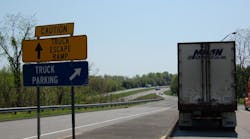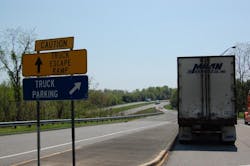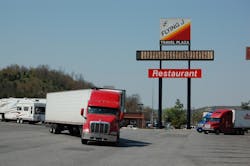(Go here and here for just two recent stories on this issue.)
The numbers speak pretty bluntly by themselves, too, as some 77 million “Baby Boomers” are expected to retire over the next two decades, with only 46 million new workers waiting in the wings to replace them, according to data tracked by the American Society for Training and Development (ASTD).
On top of that, ASTD’s research indicates that “Generation X” workers (born between 1965 and 1979) typically value a strong balance between life and work, priding themselves on self-reliance and resourcefulness.
Then there are “Generation Y” or “Millennial” workers, born between 1980 and 2000, who are more technologically savvy and desire even more workplace flexibility, the group added.
Yet here’s an interesting tangent in this debate: is that cohort of “retiring” baby boomers being too quickly dismissed as a workforce resource for trucking? Maybe not as drivers and technicians, but as dispatchers, load planers, and the like?
That’s part of broader view of the U.S. labor pool espoused by William Zinke, an 88-year old self-described "human resources and aging expert" who co-authored a paper in 2000 with Dr. Elliott Jaques entitled The Evolution of Adulthood: A New Stage.
That paper argues that a “third stage” to adulthood needs to be added alongside the existing two cohorts, broken up into the 18-40 and 40-62 groupings.This “third stage” of adulthood - from 62 to 85 – is comprised today of many people who not only can work but wish to continue working as well.
“The national retirement age of 65 was set 80 years ago, but with the 20th century’s greatest gift of 30 years added to longevity, this outdated policy perpetuates negative perceptions of older workers,” Zinke (seen at left) explained.
“With 109 million Americans including every baby boomer now over 50, this is not just about living longer – it’s a wake-up call to recognize their ability to contribute to the nation’s economic growth,” he stressed.
Older workers deliver productive engagement and their job tenure is almost four times longer than younger workers, Zinke pointed out, and are in his words an “enormous talent pool” that brings critical characteristics to the workplace, which he dubs “Double ESP.”
"That stands for ‘Experience, Expertise, Seasoned Judgment and Proven Performance,’” Zinke said, noting that older workers tend to be more reliable, dependable and committed to their work.
“They require less training and development than younger workers, and also can serve as experienced mentors and coaches,” he added. “Their lower turnover rates are convincing managers to reallocate recruiting and training budgets away from the 20 to 24 and 25 to 34 age groups – who average 1.3 and 3 years of job tenure, respectively – and more toward the 55 to 64 age group, whose average tenure is 10.4 years.”Dr. Janice Wassel, associate professor of gerontology at the University of North Carolina Greensboro, added that current research on aging shows that the mind actually gets sharper with age in a number of vital areas including cognitive skills, multi-tasking and managing conflict and compromise, while “negative emotions” such as sadness, anger and fear become less pronounced than in the “drama-filled” younger years.
Zinke also noted that a Merrill Lynch survey conducted in 2014 found that 72% of pre-retirees aged 50 and over want to continue working well past retirement age – and that “phenomenal aspect” of aging is coming into play “none too soon” as there are now only 3.3 workers per one retiree today compared to 16.5 in 1950.
So perhaps trucking can look to older workers at the very least to provide for its administrative personnel needs going forward; something to consider at the very least where future workforce planning is concerned.






